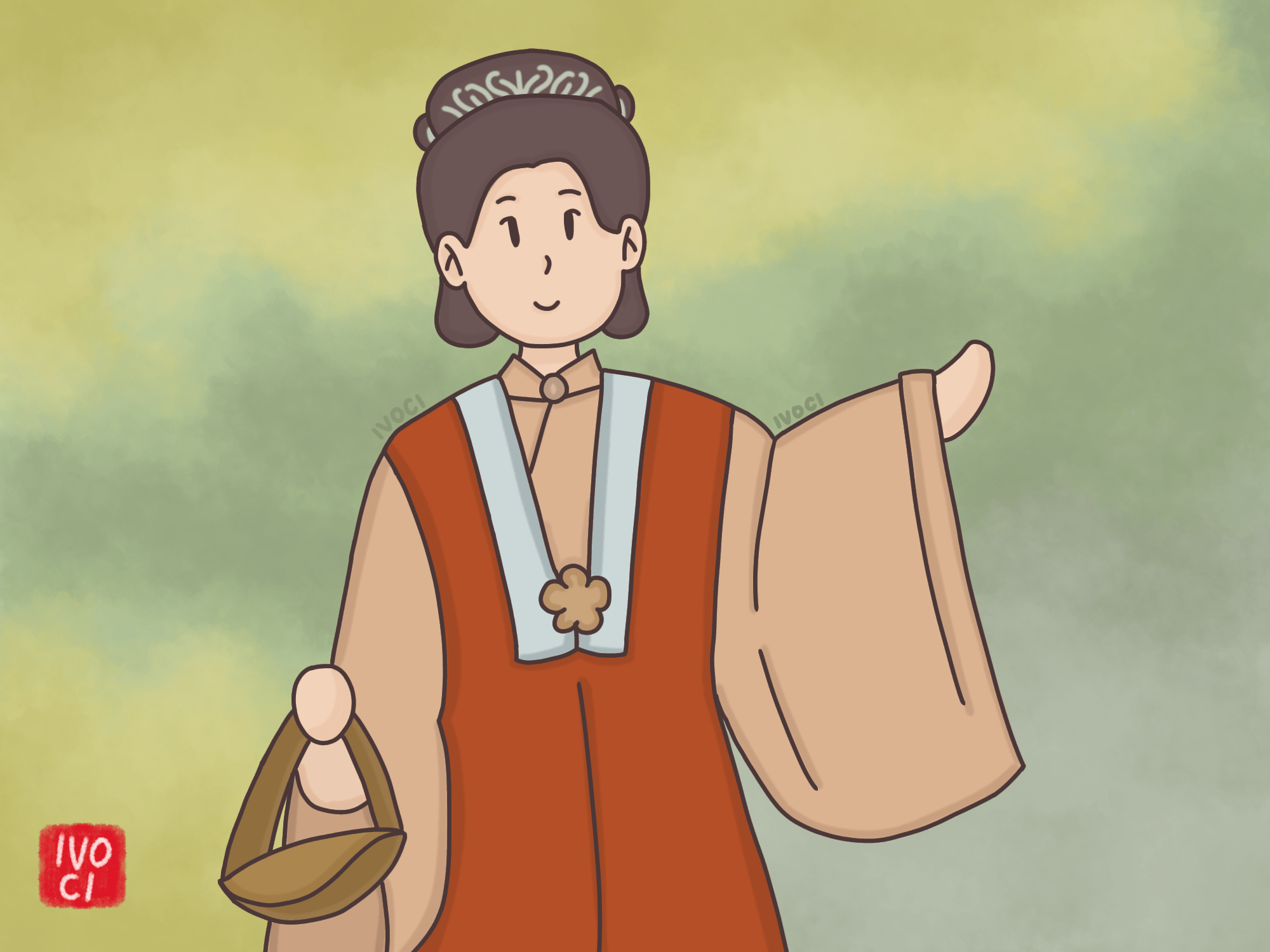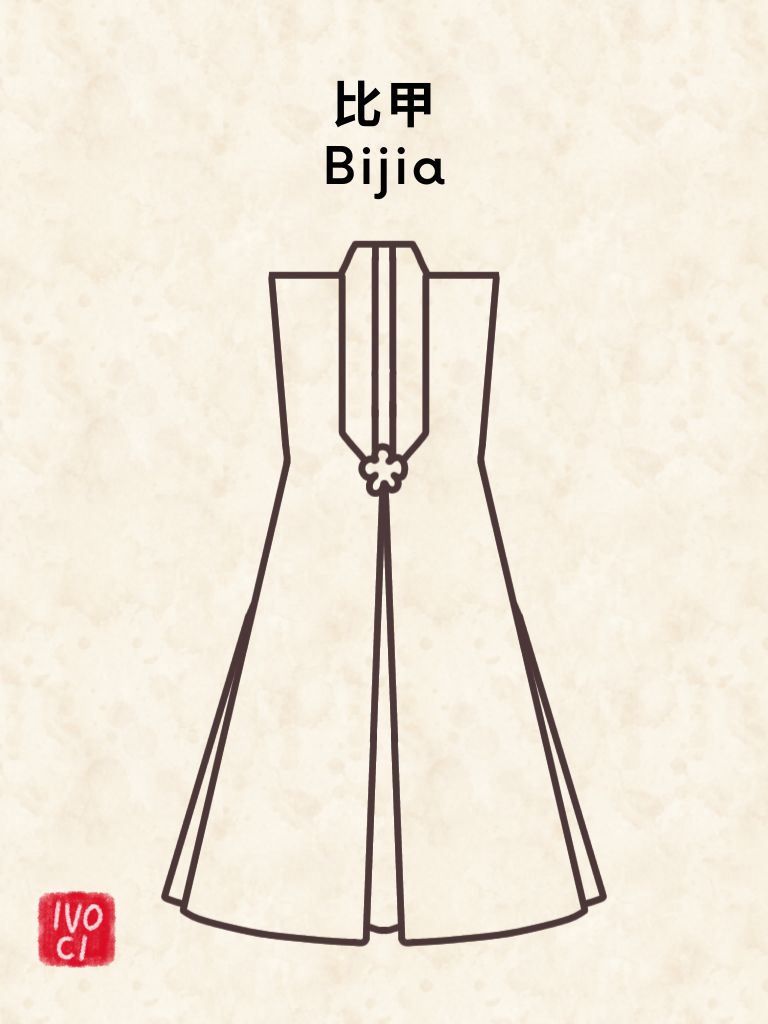Bijia (Chinese: 比甲 ; pinyin: bǐ jiǎ) is a sleeveless and collarless vest that is split into both sides.
Bijia was popular in the Yuan and Ming dynasties.
Bijia was designed and produced by Hongjila Chabi, queen of Yuan Shizu Boer Jijin and Kublai Khan.
In the early Yuan Dynasty, bijia was only worn by the emperor.
After entering the Central Plains, bijia became popular among the people and was popular in the middle of the Ming Dynasty. From the middle to the end of the Qing Dynasty, bijia began to be rarely used.
Original development
Bijia was designed and made by the empress of Kublai Khan (the emperor of the Yuan dynasty).
By the middle of the Ming Dynasty, bijia became a popular style of dress, mostly worn by young women.
In the late Ming and early Qing dynasties, bijia became shorter.
In the middle and late Qing Dynasty, except for the old women at home who wore bijia so as not to get cold, they gradually became less worn.
Skill
1. Shape
In the Yuan Dynasty, bijia had no sleeves and collar, and the back of the garment was longer than the front, with two buttons made of thread on each side of the cleavage, originally designed for riding comfort.
The back is not cold and the arms can move freely.
In the Ming Dynasty, bijia is similar to the sleeveless beizi/pifeng, which is smaller than the beizi/pifeng.
They are long, with round collars, central front collars, or square collars.
During the Qing Dynasty, bijia were either armless or short-sleeved.
Bijia length to hip or knee, about 10 cm from the ground.
2. Fabric pattern
During the Ming Dynasty, bijia were mostly made of silk, and some were made of cotton. Generally use a sketch flower pattern.
In terms of color, mostly purple, green, pink, and various bright colors, bright red, crow blue, yellow, and other bright colors, were only used by royal nobles.
During the Qing Dynasty, bijia used multi-colored threads to embroider patterns such as phoenix peony, river cliff, seawater, and the eight treasure butterfly.
Cultural identity
1. Cultural implications
During the Yuan Dynasty, Mongolian women liked to put gold embroidery on bijia, wearing them as outerwear to make them look beautiful.
During the Ming and Qing Dynasties, bijia not only had the advantage of being economical and affordable but also made women’s bodies visually thinner, making them look slim and attractive.
In addition, the ornamental style of bijia has the characteristics of traditional Chinese arts and crafts and is a simple interpretation of the beauty of the Ming Dynasty women’s clothing.
2. Dress and fit
Bijia is worn as an outer garment, with shan or ao inside and a long skirt.
The color matching of underwear and outerwear mainly focuses on bijia and skirts.
To accentuate the color effect, the shan or ao are mostly plain.
Historical value
In the popular history of Chinese clothing, bijia is a type of clothing that connects the past and the future.
It has a certain relationship with the half-sleeved garment or banbi 半臂 in the Sui and Tang Dynasties and the crotch shirt or liang dang shan 裲裆衫 in the Wei, Jin, South and North Dynasties, and the formation of later generations of vests also stems from this.
Therefore, in the process of evolution and development of hanfu, bijia has a special historical position.
Now, bijia are widely used in hanfu.



Leave a Reply